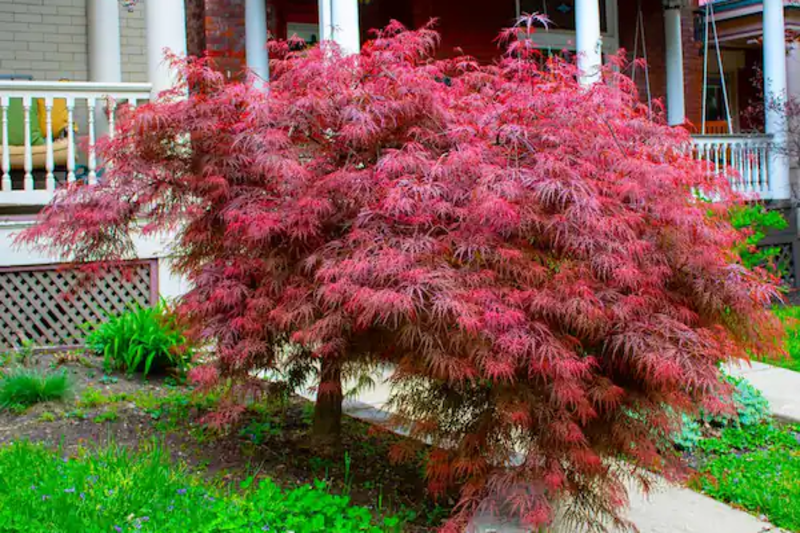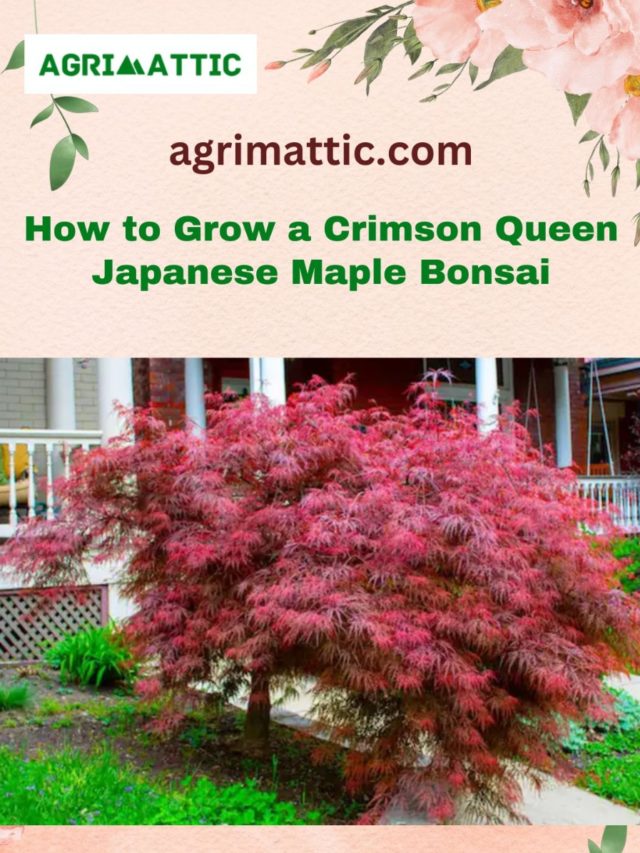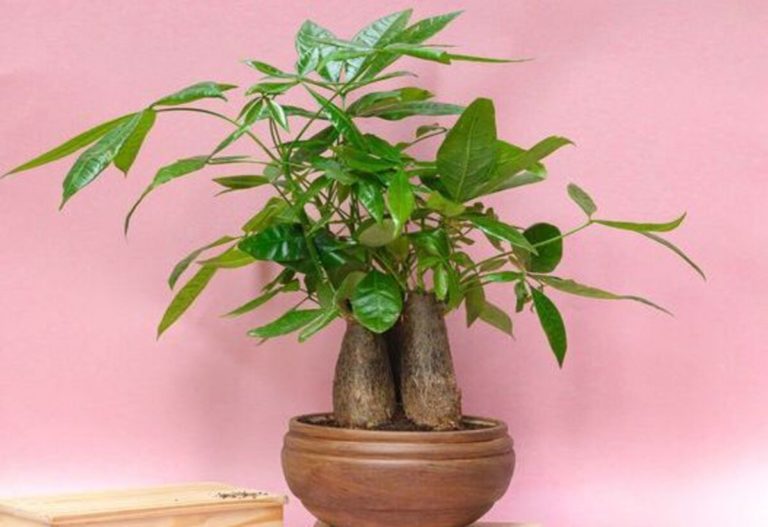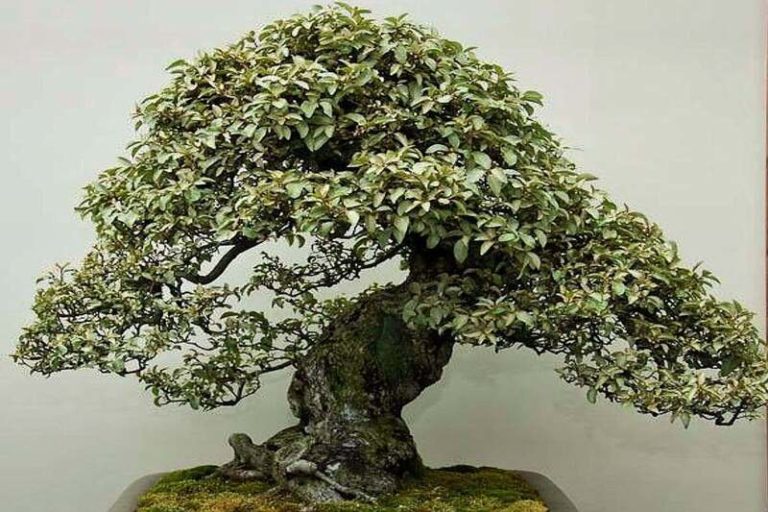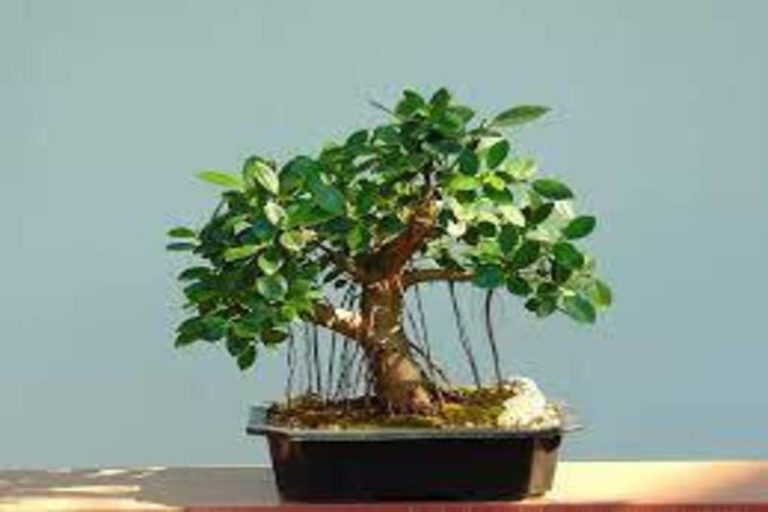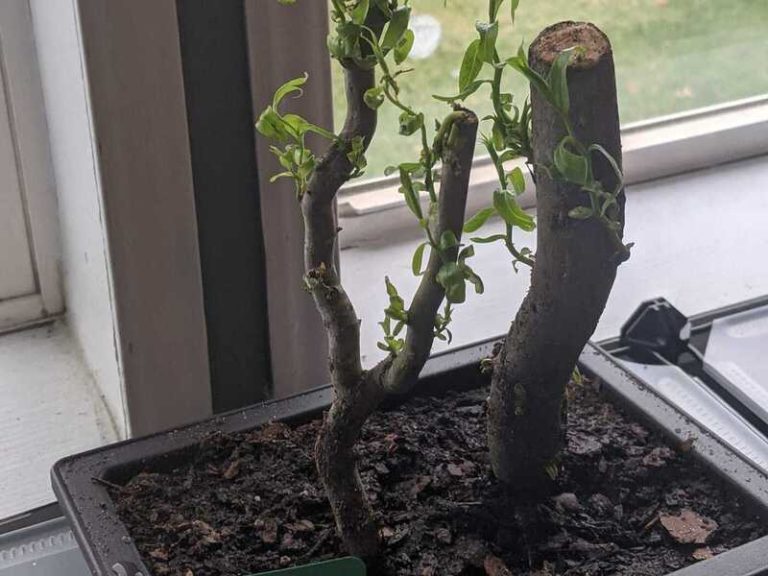Crimson Queen Japanese Maple Bonsai : A Timeless Classic for Garden Enthusiasts
Bonsai trees have gained immense popularity for their unique beauty and the artistry involved in their cultivation. One stunning variety is the Crimson Queen Japanese Maple Bonsai. In this article, we will delve into the world of this captivating bonsai tree, exploring its characteristics, care requirements, and how to optimize your article for search engine visibility.
What is a Crimson Queen Japanese Maple Bonsai?
The Crimson Queen Japanese Maple Bonsai is a miniature version of the Crimson Queen variety of the Japanese Maple tree. It is a popular bonsai choice due to its striking deep red or purple-red foliage and graceful cascading branches. This bonsai requires well-draining soil, partial sunlight, and regular watering to thrive. Through pruning and shaping techniques, it maintains its desired form and promotes dense foliage growth. The Crimson Queen Japanese Maple Bonsai is a captivating and elegant addition to any bonsai collection.
History and Origins of the Crimson Queen Japanese Maple Bonsai
The Crimson Queen Japanese Maple Bonsai has roots in Japan, where the Japanese Maple (Acer palmatum) is originally from. Japanese maple trees have been grown as bonsai for hundreds of years. The art form became famous in Japan during the Edo period (1603–1868).
It is thought that the Crimson Queen variety came from Japan in the early 1900s through careful breeding and mixing. It was made from the parent species, Acer palmatum, which has been prized for its natural beauty in Japanese parks. Not much is known about the breeder or the exact details of how it was made.
The Crimson Queen is a good choice for bonsai fans because of its unique features, such as its bright red or purple-red leaves and spiraling growth pattern. Carefully grown and trained as a bonsai, the small form of the Crimson Queen Japanese Maple tree became famous in Japan and around the world.
Today, the Crimson Queen Japanese Maple Bonsai is highly regarded in the bonsai community for its aesthetic appeal and the skill required to maintain its distinctive form. It continues to be cultivated and enjoyed by bonsai artists and enthusiasts worldwide, showcasing the rich history and enduring beauty of Japanese maple bonsai cultivation.
Crimson Queen Japanese Maple Bonsai and Their Symbolism
The Crimson Queen Japanese Maple Bonsai has meanings that come from both its culture and the meanings that all bonsai trees have in common. The Crimson Queen Japanese Maple Bonsai is often seen as a sign of the following:
Beauty and Elegance: The Crimson Queen Japanese Maple Bonsai is admired for its exquisite beauty and graceful appearance. Its vibrant red or purple-red foliage represents passion, vitality, and a zest for life. The bonsai’s delicate and intricate structure symbolizes elegance and refined aesthetics.
Balance and Harmony: Bonsai, like the Crimson Queen Japanese Maple Bonsai, shows how humans and nature can work together to create balance and unity. The careful care and training of a bonsai tree show how people and the natural world can live together in harmony.
Patience and Timelessness: Bonsai cultivation requires patience, as it takes years to shape and refine the tree into its desired form. The Crimson Queen Japanese Maple Bonsai serves as a reminder of the value of time and the beauty that can be achieved through dedication and nurturing over the long term.
Strength and Resilience: Even though the Crimson Queen Japanese Maple Bonsai looks delicate, it is strong and resilient. It can stand up to the pruning, shaping, and natural challenges of being a bonsai, which shows that it can solve problems and do well even in bad situations.
Zen and Meditation: Bonsai trees, including the Crimson Queen Japanese Maple Bonsai, are often associated with Zen Buddhism and the practice of meditation. The contemplation of the miniature tree’s form and beauty can evoke a sense of peace, tranquility, and mindfulness.
Connection to Nature: The Crimson Queen Japanese Maple Bonsai, like all bonsai trees, represents a miniature version of nature. It serves as a reminder of our connection to the natural world and our responsibility to preserve and appreciate its beauty.
The Crimson Queen Japanese Maple Bonsai can mean different things to different people and in different cultures. In the end, the meanings of bonsai are about appreciating the beauty of nature, seeking balance and unity, and learning to be aware and at peace with yourself.
Characteristics of the Crimson Queen Japanese Maple Bonsai
The Crimson Queen Japanese Maple Bonsai possesses several distinct characteristics that contribute to its allure and make it a sought-after choice among bonsai enthusiasts. Here are some notable characteristics of the Crimson Queen Japanese Maple Bonsai:
1. Foliage: The foliage of the Crimson Queen Japanese Maple Bonsai is its most striking feature. The leaves are typically deep red or purple-red in color, creating a visually captivating display. The leaves are palmate, meaning they have a hand-like shape with several pointed lobes. They are delicate, lacy, and often have serrated edges.
2. Cascading Growth Habit: The Crimson Queen Japanese Maple Bonsai grows naturally in a flowing or weeping shape, with branches that arch smoothly down. This way the plant grows gives the bonsai a touch of beauty and movement to its overall look.
3. Compact Size: As a bonsai tree, the Crimson Queen Japanese Maple is meticulously cultivated to maintain a small and compact size. It can be shaped and trained to fit within the confines of a bonsai pot, making it suitable for display in smaller spaces such as tabletops or gardens.
4. Branch Structure: The branches of the Crimson Queen Japanese Maple Bonsai possess a graceful and intricate structure. They often have a fine and delicate appearance, complementing the tree’s overall aesthetic. The branches can be wired and shaped to create desired designs and promote a balanced, visually appealing canopy.
5. Seasonal Variation: Like its larger counterparts in nature, the Crimson Queen Japanese Maple Bonsai undergoes captivating seasonal changes. In spring, the new leaves emerge with a vibrant red hue, transitioning to a deep red or burgundy during summer. In the fall, the foliage turns fiery shades of orange, red, and gold, creating a breathtaking display.
6. Winter Silhouette: Even in the dormant season, the Crimson Queen Japanese Maple Bonsai offers visual interest. Its bare branches, intricate ramifications, and elegant silhouette add a unique charm to winter landscapes.
7. Aesthetic Versatility: The Crimson Queen Japanese Maple Bonsai lends itself well to various bonsai styles and displays. It can be styled as a formal upright, slanting, cascading, or other traditional bonsai forms. Its vibrant foliage and cascading growth make it an eye-catching focal point in any bonsai composition.
Because of all of these things, the Crimson Queen Japanese Maple Bonsai is a very interesting and beautiful bonsai tree. It is famous and wanted by bonsai fans because of its colorful leaves, cascading shape, and artistic flexibility.

Types of Crimson Queen Japanese Maple Bonsai
While there is only one specific cultivar known as the Crimson Queen Japanese Maple, the term “types” in the context of bonsai refers to the various styles and forms in which the Crimson Queen Japanese Maple Bonsai can be styled and trained. Here are some common types or styles of Crimson Queen Japanese Maple Bonsai:
Formal Upright (Chokkan): In this style, the bonsai’s trunk goes up straight or with a slight bend. The stems are balanced and orderly, and they spread out in layers. The formal straight shape of the Crimson Queen Japanese Maple Bonsai gives it a sense of strength and steadiness.
Slanting (Shakan): The slanting style has a stem that leans diagonally, making it look like it is moving or growing in the wind. The slanted base and the way the branches are set up make for a lively and interesting arrangement. With this style, the Crimson Queen Japanese Maple Bonsai can show that it is strong and can change.
Cascade (Kengai): The cascade style represents a tree growing on a steep slope or cliff, with the branches and foliage cascading downward. The trunk of the bonsai extends beyond the edge of the pot, creating a flowing and dramatic appearance. The Crimson Queen Japanese Maple Bonsai, styled as a cascade, evokes a sense of grace and natural beauty.
Informal Upright (Moyogi): The informal upright style has a curved and slightly bent base that looks like a tree’s natural growth pattern. The stems are set up in a more random and casual way, giving the impression that they are moving naturally. The Crimson Queen Japanese Maple Bonsai has a more relaxed and casual look because it is made in an upright form.
Literati (Bunjin): The literati style is characterized by an elongated, twisting trunk and sparse, delicate foliage. The branches are arranged asymmetrically, creating an artistic and abstract appearance. The Crimson Queen Japanese Maple Bonsai styled in the literati form can evoke a sense of sophistication, artistic expression, and a connection to nature’s inherent beauty.
It’s important to remember that these styles aren’t just for the Crimson Queen Japanese Maple Bonsai. They can also be used for other types of bonsai. The choice of style is up to the bonsai artist’s artistic idea and personal taste. Each style gives the Crimson Queen Japanese Maple Bonsai its own charm and expression, bringing out its unique qualities and making it look better.
How to Grow a Crimson Queen Japanese Maple Bonsai
Growing a Crimson Queen Japanese Maple Bonsai requires attention to specific care guidelines to ensure its health and promote its desired form. Here is a step-by-step guide on how to grow a Crimson Queen Japanese Maple Bonsai:
- Choose a healthy tree: Select a Crimson Queen Japanese Maple tree with a strong trunk, well-developed branches, and a healthy root system. Look for a tree that exhibits good vigor and shows no signs of disease or damage.
- Soil and pot selection: Use well-draining bonsai soil or a mixture of akadama, pumice, and lava rock. This soil composition allows for proper drainage while retaining some moisture. Select a bonsai pot that is appropriate in size, providing enough space for the roots to develop and ensuring adequate drainage.
- Repotting: Repot the Crimson Queen Japanese Maple Bonsai every two to three years, preferably during the early spring before new growth begins. Gently remove the tree from its current pot, carefully prune any circling or tangled roots, and place it into a new pot with fresh bonsai soil. This promotes root health and development.
- Light and temperature: Put the bonsai where it will get some sun in the morning and some shade in the afternoon. Keep it from getting too hot or too cold. The Crimson Queen Japanese Maple Bonsai does best in temperatures between 50°F and 75°F (10°C and 24°C).
- Watering: Water the bonsai regularly to keep the soil moist but not waterlogged. The frequency of watering depends on various factors, such as climate, pot size, and season. Check the moisture level of the soil by inserting a finger into it about an inch deep. Water thoroughly when the soil feels slightly dry.
- Pruning and shaping: Prune the Crimson Queen Japanese Maple Bonsai to maintain its desired form and promote branching. Use sharp bonsai pruning shears to carefully remove any unwanted or excessive growth. Regularly pinch back new shoots to encourage dense foliage growth. Wiring can also be applied during the dormant season to shape and guide the branches.
- Fertilization: Feed the Crimson Queen Japanese Maple Bonsai with a balanced bonsai fertilizer during the growing season, typically from spring to fall. Follow the instructions on the fertilizer packaging for the appropriate dosage and frequency. This provides the necessary nutrients for healthy growth.
- Protection and care: Protect the bonsai from pests and diseases by inspecting the tree regularly and addressing any issues promptly. Treat pests with appropriate insecticides and apply fungicides if fungal diseases are observed. Shield the bonsai from strong winds and provide winter protection in colder climates to prevent damage from freezing temperatures.
You can grow and care for a beautiful Crimson Queen Japanese Maple Bonsai by following these steps and giving it the right care. Remember to pay attention to your bonsai tree and give it what it needs, as each situation is different. Your bonsai will grow and thrive over time if you give it regular care and attention.
Benefits of the Crimson Queen Japanese Maple Bonsai
The Crimson Queen Japanese Maple Bonsai offers several benefits beyond its aesthetic appeal. Here are some notable benefits of cultivating and enjoying a Crimson Queen Japanese Maple Bonsai:
1. Aesthetics: The Crimson Queen Japanese Maple Bonsai is renowned for its stunning deep red or purple-red foliage and cascading branches. Its miniature size and intricate form make it a visually captivating and aesthetically pleasing addition to any space, whether indoors or outdoors.
2. Stress Relief and Relaxation: Taking care of a bonsai, like the Crimson Queen Japanese Maple Bonsai, can be a relaxing and healing pastime. Working with bonsai trees has been shown to lower stress, increase awareness, and make people feel calm and peaceful.
3. Connection with Nature: Growing a Crimson Queen Japanese Maple Bonsai allows individuals to connect with nature in a unique and intimate way. It provides a sense of being close to the natural world, even in urban environments. The bonsai’s seasonal changes and growth patterns offer an opportunity to observe and appreciate the beauty and cycles of nature.
4. Indoor and Outdoor Versatility: The Crimson Queen Japanese Maple Bonsai can be grown both inside and outside, so it can be used in a wide range of places and temperatures. It is a good choice for decorating indoor areas like offices, living rooms, or patios because it is small and has pretty leaves. Outdoors, it can improve parks, patios, or bonsai displays.
5. Educational Value: Growing and Caring for a Crimson Queen Japanese Maple Bonsai provides a hands-on learning experience about horticulture, tree cultivation, and bonsai artistry. It offers an opportunity to develop skills in pruning, shaping, and understanding plant behavior, which can be applied to other horticultural pursuits.
6. Conversation Starter and Decorative Piece: The Crimson Queen Japanese Maple Bonsai can be the center of attention in a room or yard because of how unique and interesting it looks. Its beauty and craftsmanship can add a bit of grace and sophistication to any room, making it a piece of décor that people look at and want to know more about.
7. Sense of Accomplishment: Taking care of and growing a Crimson Queen Japanese Maple Bonsai well can give you a sense of pride and success. Taking care of a bonsai and seeing it grow and change into a live work of art can be beneficial and satisfying.
While the benefits of the Crimson Queen Japanese Maple Bonsai extend beyond these points, they capture some of the most significant advantages of cultivating and enjoying this beautiful bonsai tree.
Displaying and Showcasing the Crimson Queen Japanese Maple Bonsai
Displaying and showcasing the Crimson Queen Japanese Maple Bonsai is an opportunity to highlight its beauty and create an aesthetically pleasing presentation. Here are some tips on how to effectively display and showcase your Crimson Queen Japanese Maple Bonsai:
Selection of Display Area: Choose a location that provides the ideal conditions for the Crimson Queen Japanese Maple Bonsai. It should receive partial sunlight or bright, indirect light, depending on the specific needs of your bonsai. Avoid areas with extreme temperature fluctuations or drafts.
Bonsai Stands or Tables: You might want to put your Crimson Queen Japanese Maple Bonsai on a stand or table made just for bonsai. These stands raise the bonsai, which lets it be seen from different angles and makes it look better overall.
Accent Elements: Complement the Crimson Queen Japanese Maple Bonsai with accent elements that enhance its natural beauty. Use small decorative rocks, moss, or bonsai figurines to create a visually appealing composition. These elements can add depth and texture to the overall display.
Seasonal Variations: Use the way the Crimson Queen Japanese Maple Bonsai changes with the seasons to make interesting displays. Show off the bright red or purple-red leaves in the spring and summer. In the fall, orange, red, and gold are the colors to focus on. During the winter, draw attention to the bonsai’s elegant shape and beautiful bare branches.
Bonsai Containers and Pots: Choose a bonsai pot or container that goes well with the Crimson Queen Japanese Maple Bonsai’s style. Think about pottery or clay pots, choosing colors and patterns that go well with the rest of the show. Make sure that the size of the pot is right for the root system of the bonsai.
Group Plantings: Combine the Crimson Queen Japanese Maple Bonsai with other bonsai or partner plants to make interesting arrangements. This method, called group plantings or forest plantings (yose-ue), gives the show depth and variety, making it look like a real forest or landscape scene.
Regular Maintenance: Keep the Crimson Queen Japanese Maple Bonsai well-groomed and healthy to ensure an attractive display. Regularly prune and shape the bonsai to maintain its desired form. Remove any dead or yellowing foliage, and ensure the soil is properly watered and fertilized.
Showcasing at Bonsai Exhibitions: If you have a particularly exceptional Crimson Queen Japanese Maple Bonsai, consider participating in bonsai exhibitions or shows. These events provide opportunities to showcase your bonsai alongside other skilled artists and enthusiasts, gaining recognition and feedback from the bonsai community.
Remember that the way you show off and present your Crimson Queen Japanese Maple Bonsai should be based on your own style and tastes. Try out different layouts, elements, and creative ideas to make a display that shows off your bonsai’s unique beauty.
Styling and Design of a Crimson Queen Japanese Maple Bonsai
Styling and designing a Crimson Queen Japanese Maple Bonsai involves shaping the tree to create a visually appealing and balanced composition. Here are some considerations and techniques for styling and designing your Crimson Queen Japanese Maple Bonsai:
1. Research and Inspiration: Familiarize yourself with various bonsai styles and designs to determine the direction you want to take with your Crimson Queen Japanese Maple Bonsai. Look for inspiration in books, magazines, online resources, and bonsai exhibitions. Study the natural growth patterns of Japanese maple trees for guidance.
2. Trunk Selection: Assess the trunk of your Crimson Queen Japanese Maple Bonsai and identify its best features. Consider the trunk’s shape, movement, and taper. Select a front view that showcases the most interesting and aesthetically pleasing aspects of the trunk.
Basic Styling Techniques: The following techniques can be employed to shape and design your Crimson Queen Japanese Maple Bonsai:
- Pruning: Regular pruning helps maintain the bonsai’s shape and encourages ramification (branching). Remove unwanted branches, crossing branches, and those that detract from the desired design. Prune back new growth to maintain the desired silhouette.
- Wiring: Branches can be bent and shaped with wire. Use metal or copper bonsai wire and carefully wrap it around the trees so you don’t hurt them. Wire the tree when it is dormant and the stems are more pliable. Watch how tight the wire is and take it off before it cuts into the bark.
- Branch Placement: Consider the overall balance and harmony of the branches. Aim for an open and airy canopy with branches that radiate outward in a pleasing manner. Avoid overcrowding and crossing branches.
- Apical Dominance: Maintain apical control by letting the top, or apex, of the tree be a little bigger than the rest of the branches. This helps give the whole design a sense of order and balance.
Styling Techniques for Specific Bonsai Forms: The Crimson Queen Japanese Maple Bonsai can be styled in various traditional bonsai forms. Here are a few examples:
- Formal Upright (Chokkan): Emphasize the straightness and upward growth of the trunk. Maintain a clear, well-defined leader (the main vertical branch). Create balanced and symmetrical branching.
- Informal Upright (Moyogi): Highlight the natural curves and bends in the trunk. Aim for a more informal and organic appearance, with irregularly placed branches that create a sense of movement.
- Slanting (Shakan): Position the trunk at an angle, suggesting a tree growing against the wind. Create branches that complement the slanting trunk, conveying a sense of dynamic movement.
- Cascade (Kengai): Dramatically bend the trunk downward, cascading over the edge of the bonsai container. Balance the branches to maintain a harmonious overall composition.
- Patience and Iteration: Styling and designing a bonsai tree is an ongoing process that requires patience and close attention. As your Crimson Queen Japanese Maple Bonsai grows, you should look at its design every so often and make changes as necessary. It might take a few years or even a few decades to get the look you want.
Remember that styling and planning a Crimson Queen Japanese Maple Bonsai is an artistic statement, and there are no hard and fast rules. Let your imagination lead you, but don’t change the way the tree grows naturally. With time, care, and an eye for art, your bonsai will grow into a live piece of art that is unique and interesting.

How to Care for and Maintain a Crimson Queen Japanese Maple Bonsai
Caring for and maintaining a Crimson Queen Japanese Maple Bonsai involves attending to its specific needs to ensure its health, growth, and overall well-being. Here are some essential care guidelines for your Crimson Queen Japanese Maple Bonsai:
- Sunlight: Provide the bonsai with a location that receives partial sunlight or dappled shade. Avoid exposing it to intense, direct sunlight for extended periods, as it can scorch the delicate foliage. Morning sun and afternoon shade are generally ideal.
- Watering: Maintain consistent moisture levels in the soil to keep the bonsai adequately hydrated. Water the tree thoroughly whenever the top inch of soil feels slightly dry. Ensure that excess water can drain freely from the pot to prevent waterlogging, which can lead to root rot.
- Soil and Fertilizer: Use bonsai dirt that drains well, or mix akadama, pumice, and lava rock. This kind of dirt helps roots grow in a healthy way and lets water drain away well. Use a balanced bonsai fertilizer to feed the Crimson Queen Japanese Maple Bonsai during the growing season, which is from spring to fall. Follow the directions on the package for the right amount and how often to use it.
- Pruning: To keep the Crimson Queen Japanese Maple Bonsai in the shape and size you want, you have to prune it regularly. Take off any stems that are dead, sick, or weak. Cut back on too much growth to keep a healthy and attractive shape. To put the least amount of stress on the tree, prune it when it’s not growing.
- Wiring and Shaping: During the dormant season, the stems can be shaped and directed with wire. Use metal or copper bonsai wire, being careful not to wrap it too tightly so as not to hurt the delicate twigs. Keep an eye on the wire and take it down as soon as it starts to cut into the wood. This will avoid scarring.
- Protection from Extreme Temperatures: Shield the bonsai from extreme temperatures, especially during the winter and summer. Provide protection from frost and freezing temperatures by moving the bonsai indoors or placing it in a sheltered location. During the hot summer months, protect the tree from excessive heat and ensure adequate hydration.
- Pest and Disease Control: Check the Crimson Queen Japanese Maple Bonsai for bugs like aphids, scale insects, and spider mites on a regular basis. If you find them, get rid of them right away with pesticides or natural ways like neem oil. Keep an eye out for diseases like powdery mildew or root rot and take the right steps to treat them.
- Repotting: Repot the Crimson Queen Japanese Maple Bonsai every two to three years, preferably in early spring before new growth starts. Repotting helps refresh the soil, promote root development, and prevent the tree from becoming root-bound. Prune back the roots slightly during repotting to maintain a healthy root system.
- Seasonal Considerations: Be mindful of the tree’s seasonal requirements. During the winter, when the tree is dormant, reduce watering and protect it from freezing temperatures. In spring, monitor new growth and adjust watering and fertilization accordingly. During the summer, provide adequate hydration and shade from intense sunlight.
- Regular Observation and Care: Observe your Crimson Queen Japanese Maple Bonsai regularly to detect any signs of stress, nutrient deficiencies, or pests. Adjust your care routine accordingly and provide the necessary attention to maintain the tree’s overall health and vitality.
Remember that each bonsai is different, and its care needs may change depending on its surroundings, location, and the way it looks. By giving your Crimson Queen Japanese Maple Bonsai the right care and attention, you can make sure it stays healthy and beautiful for years to come.
Crimson Queen Japanese Maple Bonsai Care Sheet
| Aspect | Care Tips |
| Watering | Keep the soil consistently moist. Water thoroughly whenever the top inch of soil feels slightly dry. Avoid overwatering or letting the soil dry out completely. |
| Sunlight | Provide partial sunlight or dappled shade. Protect from intense, direct sunlight, especially during the hottest parts of the day. |
| Temperature | Protect from extreme temperatures. Provide shelter from frost and freezing temperatures in winter. |
| Humidity | Maintain moderate humidity levels. Mist the foliage occasionally, especially in dry indoor environments. |
| Fertilization | Apply a balanced bonsai fertilizer during the growing season (spring to fall). Follow the instructions on the package for dosage and frequency. |
| Pruning and Trimming | Regularly prune to maintain shape and remove dead, weak, or diseased branches. Trim excessive growth to maintain balance. |
| Wiring and Styling | Wire and shape branches during the dormant season. Monitor wire tension and remove it before it cuts into the bark. |
| Repotting | Repot every 2-3 years in early spring. Prune back the roots slightly and refresh the soil to promote root health. |
| Pest and Disease Control | Regularly inspect for pests and diseases. Treat promptly with appropriate insecticides or organic methods. |
| Winter Care | Reduce watering during the dormant season. Protect from freezing temperatures and provide adequate shelter. |
| Regular Maintenance | Regularly observe and care for the bonsai. Adjust watering, fertilization, and pruning based on the tree’s needs. |
Remember that this care sheet gives you basic advice, but it’s important to keep an eye on your unique Crimson Queen Japanese Maple Bonsai and change how you care for it based on what you see. Care needs can be affected by things like temperature, position, and the health of each tree.
Conclusion
The Crimson Queen Japanese Maple Bonsai is a stunning variety that captivates with its vibrant foliage and graceful form. By following the care guidelines outlined in this article, you can cultivate a healthy and beautiful bonsai. Remember to pay attention to common issues and troubleshoot them promptly. By optimizing your article for search engines, you can help others discover and appreciate the wonders of the Crimson Queen Japanese Maple Bonsai. Enjoy the journey of bonsai cultivation and the beauty it brings to your life.
FAQ:
Q: What is a Crimson Queen Japanese Maple Bonsai?
A: A Crimson Queen Japanese Maple Bonsai is a miniature tree created through the art of bonsai cultivation. It is a variety of Japanese maple known for its stunning deep red or purple-red foliage and graceful branching structure.
Q: How big does a Crimson Queen Japanese Maple Bonsai grow?
A: The size of a Crimson Queen Japanese Maple Bonsai can vary depending on its age and the care it receives. Generally, it reaches a height of 2 to 3 feet (60 to 90 cm) when fully grown, making it a medium-sized bonsai.
Q: How long does it take to grow a Crimson Queen Japanese Maple Bonsai?
A: Growing a Crimson Queen Japanese Maple Bonsai is a long-term process that requires patience. It can take several years, often around 5 to 10 years or more, to develop a well-established and aesthetically pleasing bonsai tree.
Q: Can a Crimson Queen Japanese Maple Bonsai be kept indoors?
A: The Crimson Queen Japanese Maple Bonsai can be kept inside for short periods of time, but it does best when grown outside. It needs some sun and a natural environment to grow well. Indoor settings might not have enough light or the right warmth for long-term health.
Q: What are the care requirements for a Crimson Queen Japanese Maple Bonsai?
A: A Crimson Queen Japanese Maple Bonsai needs partial sunlight, regular watering to keep the soil wet but not soggy, fertilizing during the growing season, and trimming to keep its shape and get rid of dead or useless branches.
Q: Can I shape and style a Crimson Queen Japanese Maple Bonsai?
A: Yes, one of the most important parts of growing a Crimson Queen Japanese Maple Bonsai is to shape and style it. Techniques like trimming, wiring, and shaping can be used to give the tree the shape you want and make it look better.
Q: How often should I water my Crimson Queen Japanese Maple Bonsai?
A: How often you water depends on things like the weather, the temperature, and the state of the land. In general, you should give the bonsai a good drink of water whenever the top inch of soil feels a little dry. Don’t water the dirt too much or let it dry out totally.
Q: Can I keep a Crimson Queen Japanese Maple Bonsai indoors during the winter?
A: It is generally not recommended to keep a Crimson Queen Japanese Maple Bonsai indoors during the winter. The tree requires a period of dormancy and exposure to cold temperatures to maintain its health. Protect the bonsai from freezing temperatures by providing adequate shelter or moving it to a suitable outdoor location.
Q: How often should I fertilize my Crimson Queen Japanese Maple Bonsai?
A: Fertilize the Crimson Queen Japanese Maple Bonsai during the growing season, which is typically from spring to fall. Use a balanced bonsai fertilizer and follow the instructions on the package for the recommended dosage and frequency.
Q: Can I grow a Crimson Queen Japanese Maple Bonsai from seeds?
A: While it is possible to grow a Crimson Queen Japanese Maple Bonsai from seeds, it is a time-consuming process. It can take several years for the tree to develop into a mature bonsai. Many bonsai enthusiasts prefer to start with young nursery-grown plants or pre-bonsai material for quicker results.
Q: Can I grow a Crimson Queen Japanese Maple Bonsai indoors?
A: While it is possible to grow a Crimson Queen Japanese Maple Bonsai indoors temporarily, it is generally best suited for outdoor cultivation. The bonsai requires partial sunlight, natural airflow, and seasonal changes to thrive and maintain its health.
Q: How often should I prune my Crimson Queen Japanese Maple Bonsai?
A: Pruning requirements may vary depending on the growth of the tree, but it is generally recommended to prune a Crimson Queen Japanese Maple Bonsai once or twice a year. Regular pruning helps maintain the desired shape, remove unwanted growth, and promote branching.
Q: Can I wire the branches of my Crimson Queen Japanese Maple Bonsai?
A: Yes, wiring is a common technique used in bonsai cultivation, including Crimson Queen Japanese Maple Bonsai. Wiring can be applied during the dormant season to shape and guide the branches. However, care should be taken to avoid leaving wires on for too long to prevent wire scarring.
Q: When should I repot my Crimson Queen Japanese Maple Bonsai?
A: Repotting is typically done every 2 to 3 years for young trees and less frequently for more mature bonsai. The best time to repot a Crimson Queen Japanese Maple Bonsai is in the early spring before new growth begins. Repotting helps refresh the soil, promote root health, and maintain the bonsai’s vitality.
Q: How do I protect my Crimson Queen Japanese Maple Bonsai from pests and diseases?
A: Regular inspection is essential to detecting any pests or diseases early on. Common pests that can affect Crimson Queen Japanese Maple Bonsai include aphids, scale insects, and spider mites. Use appropriate insecticides or organic methods to treat infestations. Ensure good airflow and proper hygiene to prevent fungal diseases.
Q: Should I provide winter care for my Crimson Queen Japanese Maple Bonsai?
A: Yes, winter care is important for the health of your Crimson Queen Japanese Maple Bonsai. Protect it from freezing temperatures by providing shelter, such as by moving it to an unheated garage or covering it with burlap. Reduce watering during the dormant season and avoid excessive exposure to cold drafts.
Q: How often should I perform regular maintenance on my Crimson Queen Japanese Maple Bonsai?
A: To guarantee the health of your bonsai, regular maintenance should be undertaken throughout the year. This involves checking for pests and illnesses, monitoring irrigation needs, maintaining correct trimming, and assuring the tree’s general health.
Also Read:

